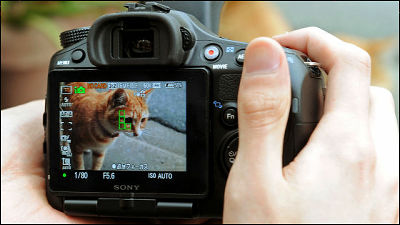We tested the 'High Res Shot' special feature on the OM-5 Mark II, which 'utilizes the slightest camera shake to generate a high-resolution photo from 12 captured images.'

OM Digital Solutions' digital cameras are equipped with a feature called ' High Res Shot ,' which creates a high-resolution photo by taking multiple photos in an extremely short amount of time and combining them. I was curious to see just how well this High Res Shot function performed, so I tried it out with
Product Features - Shooting Functions | OM-5 Mark II | OM SYSTEM Official Website
https://jp.omsystem.com/product/dslr/om-omd/om/om5mk2/feature3.html
The OM-5 Mark II is equipped with 'Tripod High Res Shot' and 'Handheld High Res Shot.' Tripod High Res Shot is a function that takes pictures while the sensor is moved while the camera is completely fixed on a tripod, and then combines them into a high-resolution photo. In contrast, Handheld High Res Shot takes advantage of the 'tiny camera shake that inevitably occurs when shooting handheld' and combines 12 'photos taken at different sensor positions' to create a high-resolution photo. The explanatory image from the introduction page of the previous-generation model, the 'OM-5,' is easy to understand, so I've included it below.
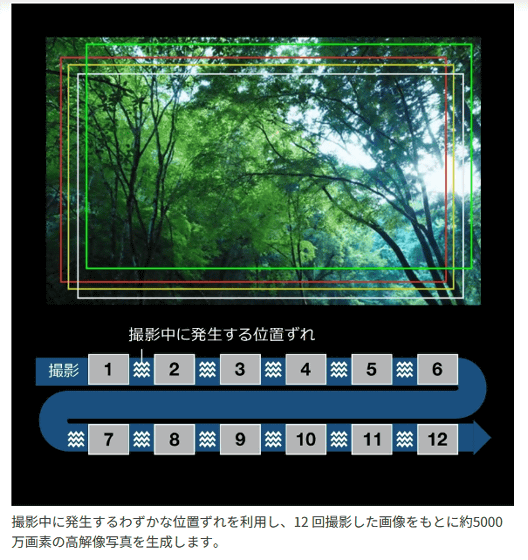
The OM-5 Mark II has an effective pixel count of approximately 20.37 megapixels, but using Handheld High Res Shot, you can record photos at approximately 50 megapixels. Output can be selected from 50 megapixels or 25 megapixels, and RAW images can also be output. This time, I shot with the setting to output 50 megapixel JPEG images. The lens used was
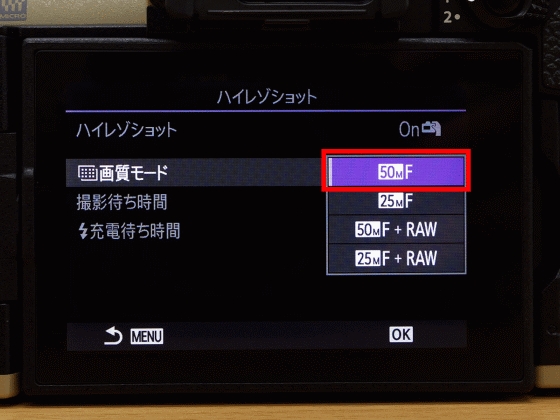
First, here's a photo taken from the station platform in normal shooting mode, not high-resolution shot. The pixel count is 5184 x 3888, or 20,155,392 pixels.
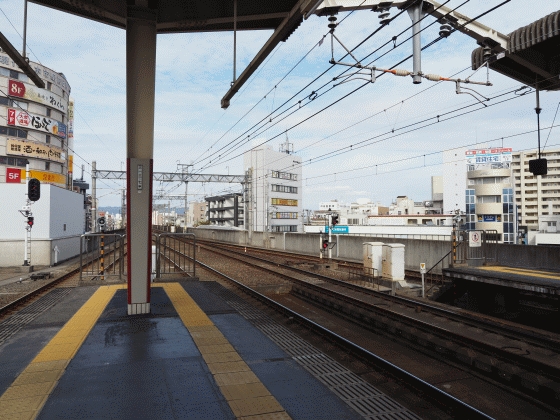
'Focal length: 13mm (35mm equivalent: 26mm)' 'F-number: 9' 'Shutter speed: 1/320 sec' 'ISO sensitivity: 200'
And here's a photo taken with handheld high-resolution shot: the pixel count was 8160 x 6120, for a total of 49,939,200 pixels.
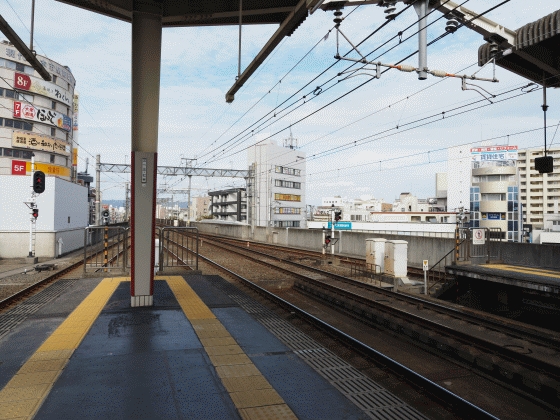
'Focal length: 13mm (35mm equivalent: 26mm)' 'F-number: 9' 'Shutter speed: 1/320 sec' 'ISO sensitivity: 200'
Below is an image taken in normal mode, cropped at the center of the photo.
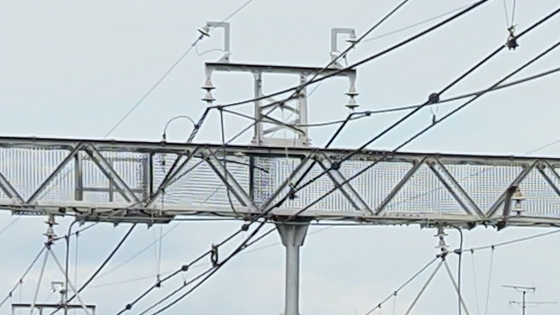
This is what a photo taken with Handheld High Res Shot looks like when cropped at 1:1. Because it has a high pixel count, objects can be displayed larger at 1:1 than in normal mode. If you look closely, you can see that overhead railroad equipment is recorded more clearly than in normal mode.
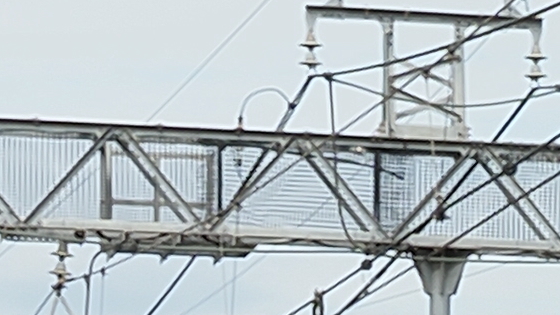
Taken in normal mode at another location.
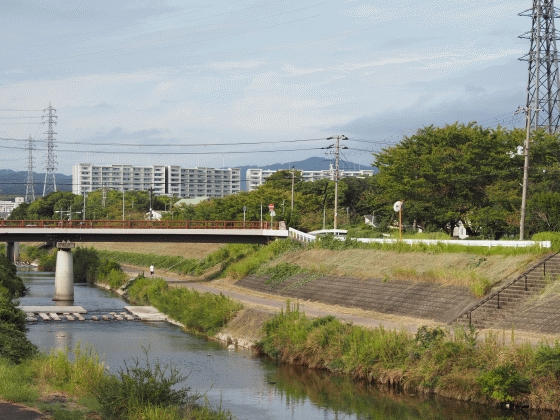
'Focal length: 45mm (35mm equivalent: 90mm)' 'F-number: 7.1' 'Shutter speed: 1/250 sec' 'ISO sensitivity: 200'
Shot with handheld high-res shot.
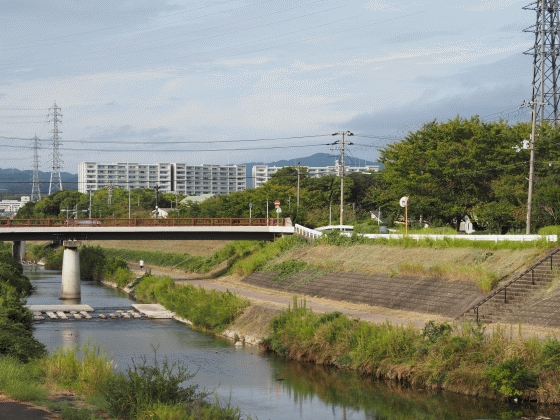
'Focal length: 45mm (35mm equivalent: 90mm)' 'F-number: 7.1' 'Shutter speed: 1/320 sec' 'ISO sensitivity: 200'
This is what it looks like when you crop out the center of a photo taken in normal mode at full size.
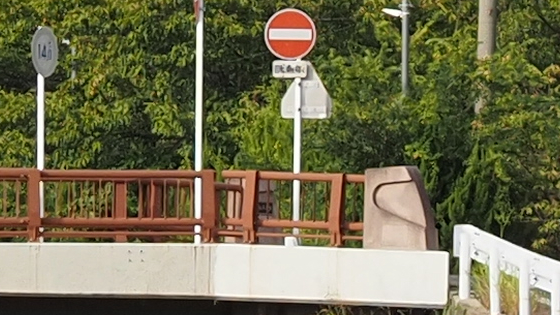
A 1:1 crop of a handheld high-res shot.
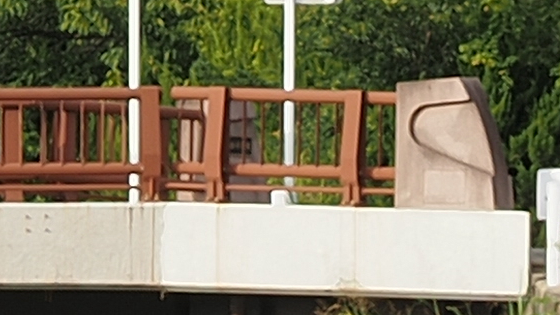
This time I took a photo in normal mode, focusing on the pylon.
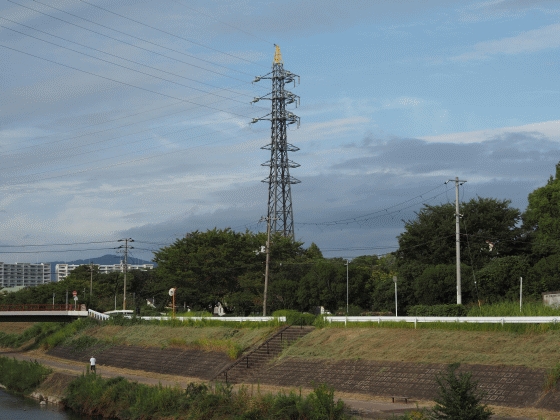
'Focal length: 33mm (35mm equivalent: 66mm)' 'F-number: 9' 'Shutter speed: 1/320 sec' 'ISO sensitivity: 200'
Also taken with handheld high-res shots.
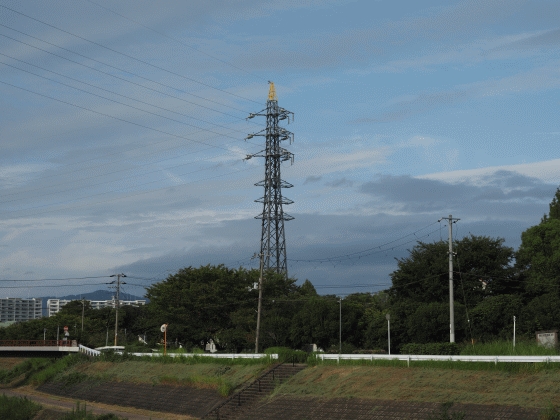
'Focal length: 33mm (35mm equivalent: 66mm)' 'F-number: 9' 'Shutter speed: 1/320 sec' 'ISO sensitivity: 200'
A 1x10 crop of the top of the tower photographed in normal mode.
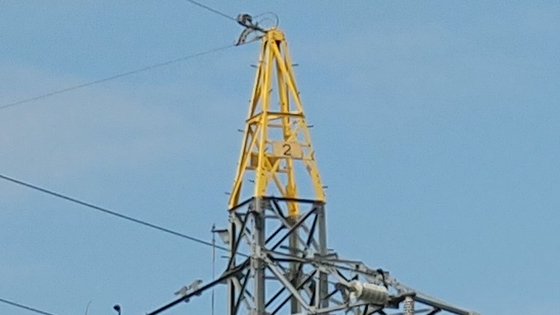
A full-size cutout of a steel tower taken with a handheld high-res shot looks like this. If you enlarge any of the photos, you can see that the handheld high-res shot has a higher resolution, but it's almost impossible to tell the difference when viewed on a PC or smartphone.
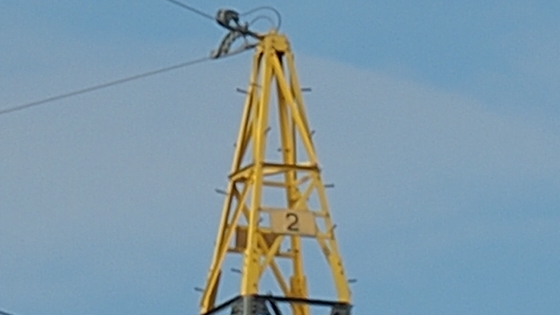
So, I tried taking a few photos with Handheld High Res Shot. First, I took a photo of the road and the sky. Click to view the full-size image and check the resolution.
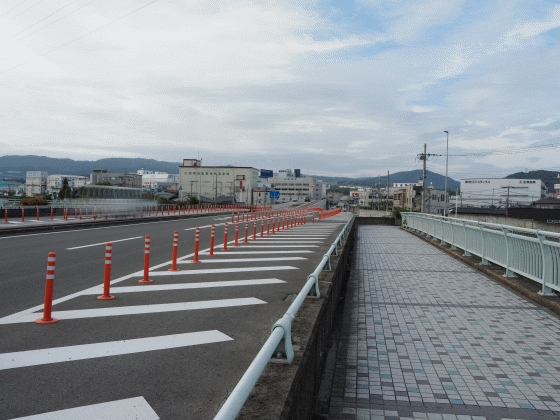
'Focal length: 16mm (35mm equivalent: 32mm)' 'F-number: 8' 'Shutter speed: 1/250 sec' 'ISO sensitivity: 200'
A bicycle chain. It's rusted to the point that it's time to replace it. When you zoom in, you can see that even the fine details of the rust are clearly recorded.
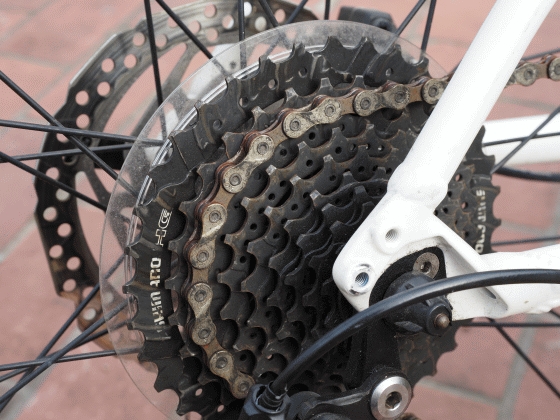
Focal length: 30mm (35mm equivalent: 60mm) F-stop: 7.1 Shutter speed: 1/80 sec ISO sensitivity: 200
I took a photo of a sugar stick on a table at Komeda's Coffee, capturing the faded feel of the handwritten font.
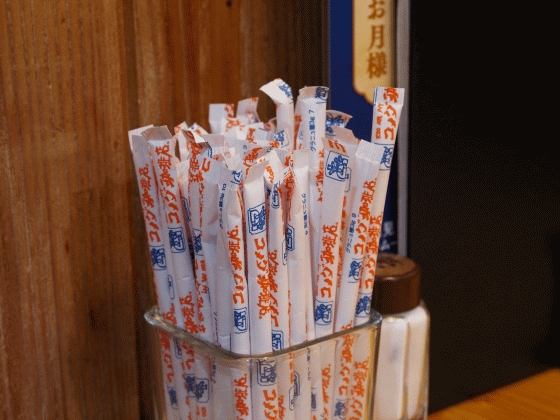
Focal length: 36mm (35mm equivalent: 72mm) F-stop: 6.3 Shutter speed: 1/80 sec ISO sensitivity: 5000
A close-up shot of the miso katsu bun, which really captures the crispy texture of the pork cutlet.
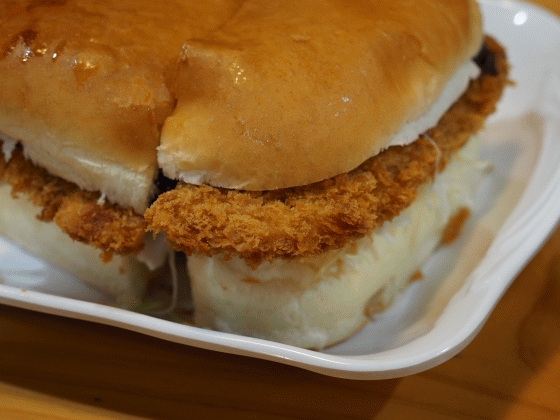
'Focal length: 33mm (35mm equivalent: 66mm)' 'F-number: 4' 'Shutter speed: 1/60 sec' 'ISO sensitivity: 1250'
Photographing the asphalt ground. Just point the camera and shoot, and you can record the fine details, so it seems like it would be great for capturing textures.
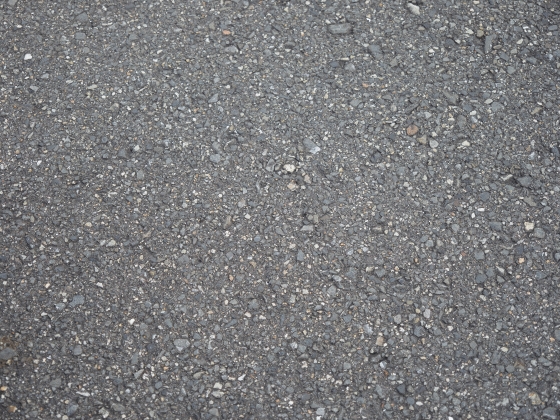
'Focal length: 45mm (35mm equivalent: 90mm)' 'F-number: 4' 'Shutter speed: 1/100 sec' 'ISO sensitivity: 200'
Handheld High Res Shot works by taking 12 photos in a very short time and then combining them, so fast-moving objects appear as if they are split into two. In the image below, the area circled in red shows the shadows of 12 flying birds. Click to view the original photo before scaling to get a better idea of what the reflections look like.
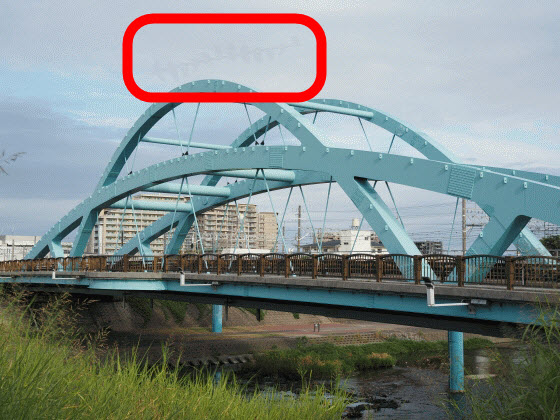
'Focal length: 23mm (35mm equivalent: 46mm)' 'F-number: 8' 'Shutter speed: 1/250 sec' 'ISO sensitivity: 200'
Interesting effects can also be seen when photographing trains and other objects. First, the photo below shows a train passing over a distant bridge, taken in normal mode.
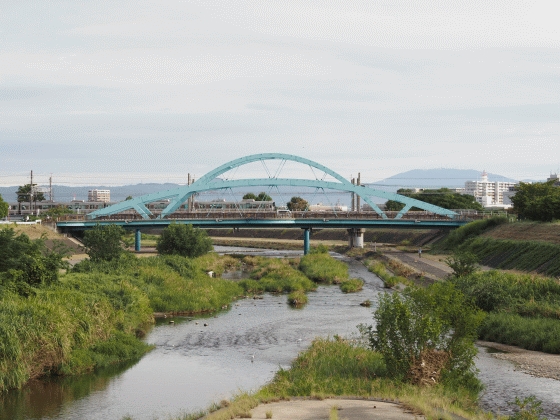
'Focal length: 45mm (35mm equivalent: 90mm)' 'F-number: 7.1' 'Shutter speed: 1/250 sec' 'ISO sensitivity: 200'
And here's the photo I took immediately using Handheld High Res Shot: The Exif information shows a shutter speed of 1/250 seconds, the same as in normal mode, but the train appears to be moving by, like a long-exposure photo.
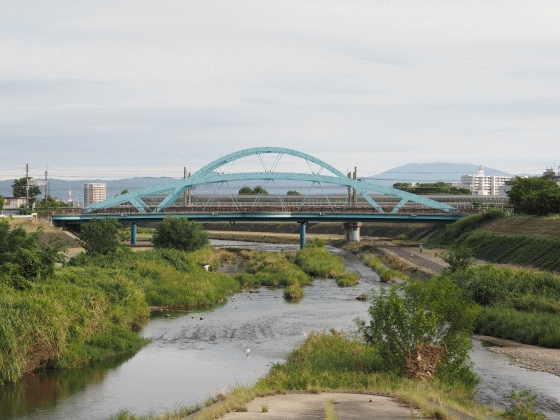
'Focal length: 45mm (35mm equivalent: 90mm)' 'F-number: 7.1' 'Shutter speed: 1/250 sec' 'ISO sensitivity: 200'
After shooting various photos with Handheld High Res Shot, I found that while it is certainly possible to take high-resolution photos, the difference from normal mode is indistinguishable unless the image is enlarged, and I felt that normal mode was sufficient for viewing on a PC or smartphone screen. It also has the drawback of creating a split-image effect with fast-moving subjects, and there's also the issue of several seconds of processing time each time you press the shutter button. For this reason, Handheld High Res Shot is a good option to use as a safeguard in addition to normal mode shooting when you want to record a once-in-a-lifetime scene in as high a resolution as possible.
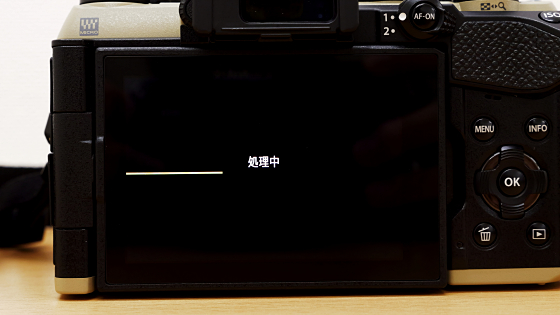
In addition, a large number of sample images taken in normal mode with the OM-5 Mark II are posted in the article below.
I actually tried taking various photos with the small and lightweight mirrorless camera 'OM-5 Mark II' Review, you can take photos smoothly without a tripod day or night & it's about the price of a luxury smartphone, so it's also a good idea to buy it instead of a smartphone - GIGAZINE

The OM-5 Mark II has an open price, and is sold on Amazon.co.jp as a set with the M.ZUIKO DIGITAL ED 12-45mm F4.0 PRO for 171,636 yen (tax included).
Amazon | OM-5 Mark II 12-45mm F4.0 PRO Lens Kit Silver | Mirrorless Cameras

Related Posts:




